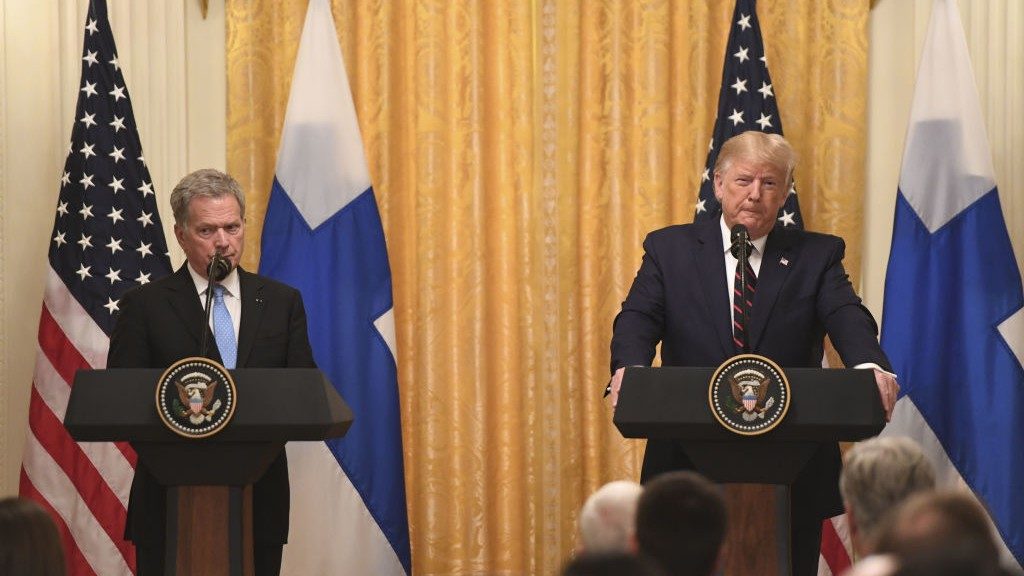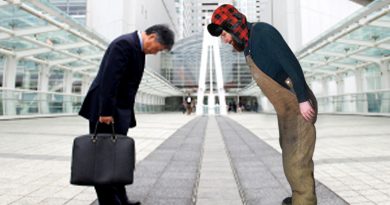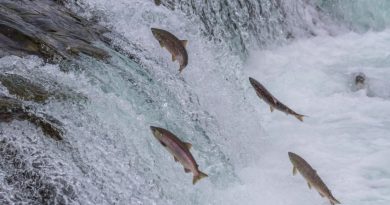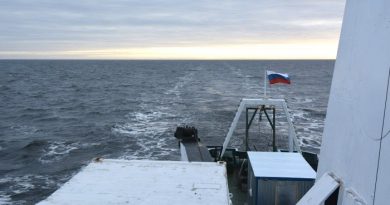Finnish and US Presidents agree on Arctic security policies

Finnish President Sauli Niinistö and U.S. President Donald Trump discussed Arctic issues, including security and the environment, during their meeting at the White House in Washington, D.C. on Wednesday.
President Trump highlighted the important role Finland was playing as a partner to NATO and reaffirmed the United States support to the Arctic council.
“The United States is partnering with Finland and other Arctic nations to address new threats to the Arctic and defend our interests there through promoting innovation, entrepreneurship, and sustainable development in the region,” says a White House news release.
In a press conference following the meeting, Trump emphasized the role Finland is playing to maintain peace in the area, adding that “America and Finland are also working together to advance stability, freedom of navigation and respect for national sovereignty in the Arctic.”
He mentioned their mutual desire to work for an Arctic free of any foreign interference.
New Start Agreement
The Finnish President also highlighted the importance of security in the Arctic and the attention it is getting from various international actors.
However, Niinistö also spoke of the growing tensions in the region.
He added that he appreciated the US president’s position that “it’s not a place for military”.
Arms control was also discussed by the two leaders, with President Niinistö calling for a new START agreement aimed at regulating the use of nuclear weapons between the US and Russia.
The New Strategic Arms Reduction Treaty was signed in April 2010 and came into force in February 2011. Its goal is to reduce both American and Russian strategic nuclear arsenals.
The current New START Treaty will remain in force until 2021, unless it is replaced by a subsequent agreement. If both parties wish, it can be extended for a maximum period of five years (until 2026).
Black carbon in the Arctic
Sauli Niinistö also said that he talked about the environment in the Arctic with President Trump and about the importance of reducing the use of black coal.
The product of incomplete combustion of organic fuels such as black coal produces black carbon which contributes up to 21 per cent of maritime shipping’s climate warming impact, according to the Clean Arctic Alliance, a coalition of 18 non-profit organizations calling for a ban on the use and carriage of heavy fuel oil in Arctic waters.
Black carbon emissions in the Arctic end up on snow, on glacier ice and sea ice, reducing their ability to reflect sun rays and increasing the absorption of heat.
As multi-year sea ice recedes due to climate change, Arctic waters will open up to increased shipping, which in turn could lead to increased black carbon emissions, fueling an already accelerating feedback loop, climate scientists warn.
The Finnish president also emphasized to Donald Trump on the fact that reducing plastic waste in the Arctic was one of the Arctic council’s key issues, Finnish media Yle reports. He also added that his American counterpart showed an interest in getting new icebreakers. Niinistö told president Trump that Finland could build them.
Related stories from around the North:
China: As China adapts to a melting Arctic, Shanghai prepares for the worst, The Independent Barents observer
Finland: US missiles: Finnish, Russian presidents call for dialogue at Helsinki meeting, Yle News
Monaco: Sea level rise to provoke ‘profound governance challenges’ & ‘difficult social choices’ says UN climate report, Eye on the Arctic
Norway: Unfazed by youth climate protests, Norwegian gov expands Arctic drilling, The Independent Barents observer
Russia: The Arctic shipping route no one is talking about, Cryopolitics Blog
Sweden: Sweden’s emissions are rising instead of falling, Radio Sweden
United States: U.S. ups rhetoric in Arctic, but not its game, Cryopolitics Blog



